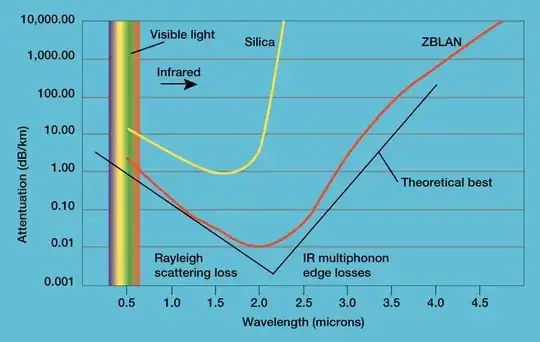The greater the frequency range of a transmission medium, the greater the number of bits per second it can transmit. In other words, the bigger the bandwidth in hertz available, the bigger the bandwidth in bits per second that can be transmitted.
Given that, why we don't use gamma rays, x-rays or ultraviolet to transmit data instead of e.g. visible(light) in optical fiber or microwaves(cell phones)?
